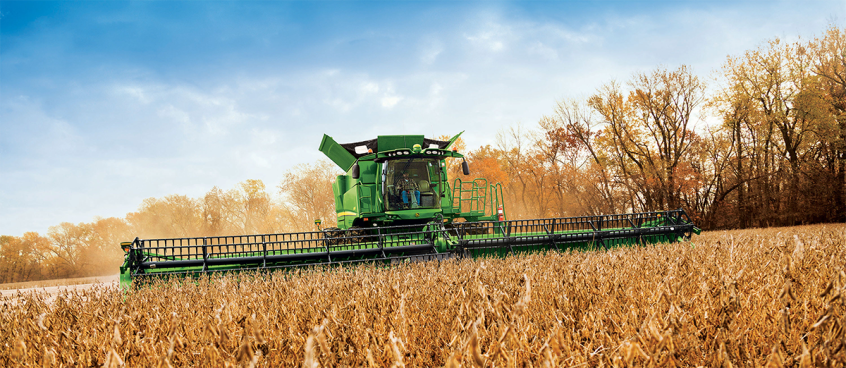A combine fire is something we don’t want you to experience. Poor weather conditions and equipment failure are factors that can slow your ability to harvest. While you can’t control the weather conditions, proper maintenance and care of your heavy equipment can reduce the likelihood of loss and decrease the resulting damage.
Physical loss of the equipment is not your only concern. You may also have lost crops, lost time, extra expense or the risk of physical injury.
You can take steps to prevent the possibility of an equipment fire and reduce damage in the event a fire occurs.
Fires need three elements to exist: oxygen, fuel (material to burn) and a heat source. Since it is virtually impossible to eliminate air, preventing equipment fires can be concentrated to reducing the fuels and heat sources present. (1)
Reduce Fuel Sources
A small leak around a heat source can become an inferno within a matter of seconds.
Before harvest season, clean your equipment. Pay close attention to the engine and engine compartment. Use a pressure washer or steam cleaner to remove oil, caked-on grease and crop residue.(2) This will reduce the possibility of fire and it will allow your engine to run cooler and more efficiently.
Make regular cleaning a part of your daily routine. Reduce fuel sources by taking a few minutes to blow off leaves, dry foliage, crop residue and other debris with an air compressor or leaf blower. Clean debris away from bearings, belts and other moving parts.
Pay special attention to maintenance. Follow instructions and lubrication schedules provided in the owner’s manual. Complete regular visual inspections for possible leaks, exposed electrical wiring or any other signs of wear and tear. Be aware of any signs of increased friction or grinding and complete regular inspections of bearings and belts.
As combines have become larger so have the amounts of fuel and oils which they carry. Pay special attention while refueling. Allow equipment to cool. Allow proper time for fumes to dissipate. Immediately wipe up any spills.
Reduce Heat Sources
The exhaust system is the most common heat source on combines and other farm machinery. Complete regular inspections of the exhaust system including the manifold, muffler and turbocharger. Be aware of and address any leaks, buildup or irregular wear and tear.
Be Prepared
Even with your best efforts a fire can still happen. With careful emergency planning fire damage can be minimized.
Equip your agricultural machinery with portable fire extinguishers. Large harvesting equipment should have two or more extinguishers. Inspect and service your fire extinguishers on a regular basis.
If a fire does occur, quickly shut off the machine, grab a fire extinguisher and get help. Be sure that the operator of the equipment always carries a cell-phone, two-way radio or some other means of communication with them. Approach any fire with extreme caution. Even a small fire can flare up dramatically as you open doors, hatches, or other areas to gain access.
These types of fires are especially dangerous when liquid fuels are involved. If possible, use the extinguisher’s flexible hose to shoot the chemical from a safe distance at the base of any flames you see. Continue to blanket flames to allow the fire to cool and prevent a reflash.
Remember it may not be possible to put out every fire. If it’s in a difficult-to-reach area or seems out of control, don’t risk the chance of injury or even death…wait for help to arrive.3 Before resuming operations after any fire, make sure to find and correct the cause. Planning ahead and quick thinking are essential in reducing the severity of the fire. Remain calm, act quickly. Most important, remain safe.
If you are unsure about practices regarding your heavy equipment and fire prevention, contact your local agricultural extension.
(1) Purdue University. (October 18, 2005). Combine fires preventable threats, specialist says. Retrieved April 8, 2010, 2009, from http://www.agriculture.purdue.edu/AgAnswers/story.asp?storyID=4065.
(2) Shutske, John. (2002). Combine and Tractor Fires. . .A Burning Problem, University of Minnesota Extension Service. Retrieved April 8, 2010 from http://www.nasdonline.org/docs/d001201-d001300/d001294/d001294.html.
(3)Shutske, John. (2002). Combine and Tractor Fires. . .A Burning Problem, University of Minnesota Extension Service. Retrieved April 8, 2010 from
http://www.nasdonline.org/docs/d001201-d001300/d001294/d001294.html.

